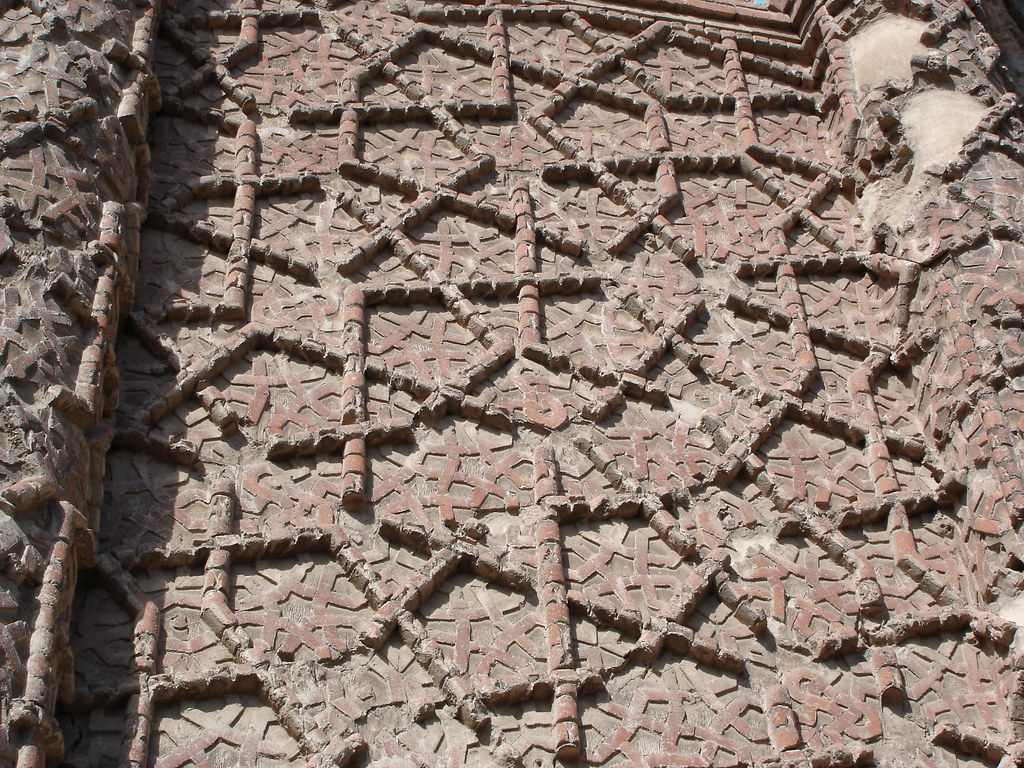extra
While studying Islamic geometric patterns one often start with comparing patterns. Comparing patterns you’ll soon observe that the immense diversity is only in the variation of patterns but as well in the way they are realised.
Maragha (1197)
The Gonbad-e Kabud in Maragha impresses by the complexity of the pattern. On the first view it looks total chaos. The double layer was created by applying baked bricks on the wall panels using cement.

Sultan Han (1229)
In the decoration of a portal of the caravanserai in Sultan Han (Turkey) the line pattern has been executed as wicker-work and attention is drawn away from the polygonal pattern.
Bursa (1428)
On a tympan in the Muradiyeh complex in Bursa (Turkey) the line pattern has been executed in coloured, glazed ceramic tiles. 10-pointed stars aren’t surrounded by pentagons, only by bow ties and long hexagons. White lines form vertical long shaped figures are in balance with the colours, that are rather horizontally homogeneous.